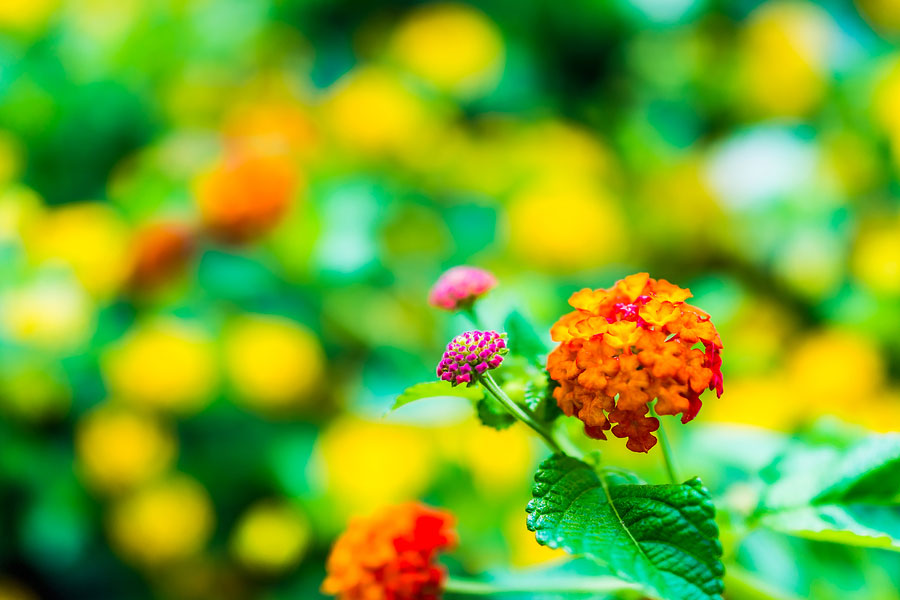Just because it is late in the summer doesn’t mean your garden has to lose its alluring color. Enjoy late summer color in your garden, yard, and landscape with some hardy flowers that bloom in the heat of the southeastern US into autumn.
Three amazing plants that bring late summer color to your outdoor spaces are:
Lantana
Lantana likes full-sun, good drainage, and to be kept moist but not wet to prevent root-rot. Lantana will bloom from spring until frost, and these are a bushy, fast growing plant that thrives in the heat of the Carolinas.
Beckon the birds and butterflies. Lantana is appealing to and attracts hummingbirds and butterflies to your garden.
Avoid trampling. Crushed lantana leaves have an off-putting odor; avoid planting where they could get trampled or walked-over to prevent this.
Take to the beach. Lantana does well near or around salt, so it is the perfect choice for planting near the beach, coastline, or water.
Not blooming? Lantana that is fertilized too frequently or planted in the shade may not bloom as well as it could.
Knockout rose
The knockout rose is a new strain of rose introduced in 2000 that embraces everything loved about a rose, without the tedious and time-consuming care. Knockout roses are resistant to drought or disease, and will rebloom every five-to-six weeks from spring until first frost.
No need to trim. Don’t worry about trimming the flower-heads for the next bloom; Knockout roses will drop their old flowers before reblooming without any pruning.
Plant with shorter plants. Plant knockout roses with shorter plants that will help cover and camouflage the longer stems of the roses, and highlight the blooms above.
They like to breathe. Plant your roses with ample distance between to provide adequate air circulation, as knockout roses like to breathe. It is suggested that you space plants around four-feet apart.
Hibiscus
Hibiscus covers a variety of plants that thrive from early spring until the first frost. These typically resemble tropical plants with large blooms that are appealing to birds and butterflies. Hibiscus likes full-sun, lots of water, and well-drained soil, and will rebloom when you remove the old flower heads periodically.
Stay away from mulch. Keep mulch away from your hibiscus stems to prevent fungi, which many Hibiscus in the Southern US are prone to.
Give some away. Hibiscus are easy to trim and replant, which makes them an easy choice for cuttings and giving to other plant-lovers.
They can get big. Make sure that you inquire as to the expected growth of your hibiscus; some varieties only grow a couple-feet tall, but others are known to shoot-up over eight-feet in height!
Want the color of your garden to last? Try these three hardy, late summer bloomers. Work with your local garden & landscape design center in Charleston, SC to find these and other colorful options for your yard and beds!
Sources:
http://www.hgtv.com/outdoors/flowers-and-plants/trees-and-shrubs/growing-double-knock-out-roses
http://www.clemson.edu/extension/hgic/plants/landscape/flowers/hgic1177.html
http://www.clemson.edu/extension/hgic/plants/landscape/flowers/hgic1179.html


